Hungarian Recipe: Halászlé / Hungarian Fisherman’s Stew
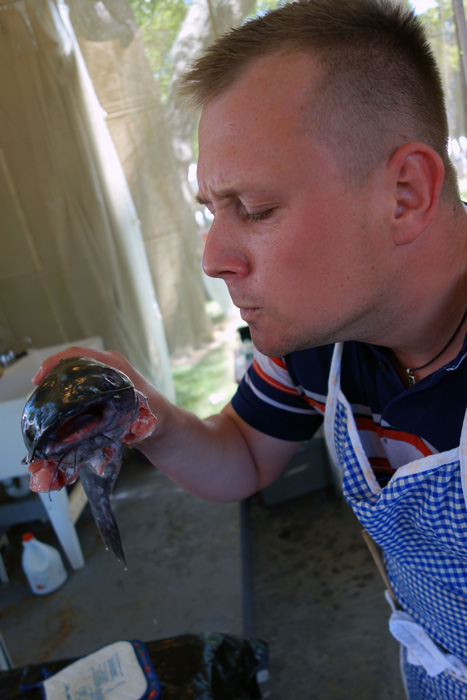
Halászlé (Hungarian fisherman’s stew) is a popular celebratory dish, often served during Lent or on Christmas Eve. The stew was originally prepared by fishermen along the Danube and Tisza rivers, using fresh fish, most often carp, catfish, perch, or pike (ideally, a mix of all four, said to give the soup more flavor).
This was done using a kettle over open fire, but these days the dish is also often prepared in home kitchens. In some regions, such as Baja, the soup is served over simple pasta, while in other regions sour cream is added to achieve a creamy consistency in the broth.
The version prepared by Péter Utasi today at the Folklife Festival Hungarian Heritage Foodways Demonstration area stays true to the Szeged region, where it is believed that the dish should be based on finding a balance of onion, fish, and paprika. This version is also characteristic of the Tisza River region, where the preparation of a stock from the head, tail, fins, and spine is considered a key step, before the filet is cooked.
A slice of bread and a glass of wine or wine spritzer is the perfect accompaniment to halászlé, as both ease the spice of the copious amounts of hot paprika added to the broth.
Chef: Péter Utasi
Ingredients
2 whole fish, approximately 2 lb each (carp, catfish, perch, or pike)
Have your fish butcher gut them, fillet them with the skin on, and give you the head, tail, and skeleton along with the filets. The skin is traditionally left on, as the glossy, smooth consistency it gets when cooked is a desired element in the dish. If preferred, remove skin.
2 medium onions
salt, black pepper
1 large tomato
4 tbsp ground paprika powder (either sweet or hot, depending on preference)
1 whole hot paprika
Preparation
- Remove the larger bones in the filets. The smaller Y-shaped bones are removed by adding salt and letting the fish sit for 1 to 2 hours until the salt “eats” the bones. If preferred, pick out the bones with needle-nosed pliers.
- Cut the filets into 1-inch square pieces, and put into the refrigerator until needed.
- With a small amount of oil, sweat finely chopped onions until they turn soft and glossy.
- Add about 2 to 3 quarts of cold water.
- Add the head, tail, fins, and skeleton of the fish, with bits of meat still hanging on.
- Add half of the paprika powder, whole hot paprika, and salt.
- Simmer on medium heat for 1 hour to make a fish broth for the soup.
- When the broth is ready, pour the contents of the pot through a colander into another pot and reserve the broth.
- Discard the head, tail, and skeleton after picking the tender pieces of meat off the bones.
- What you will have left in the colander should be the onions and small bits of meat. Press these through a mesh colander with a large ladle, or process through a food mill.
- Add this essence of ingredients back into the reserved broth. This flavors and thickens the broth.
- Bring the pot of broth back to a boil. Once boiling, add the filets, the second half of the paprika powder, and the peeled tomato.
- Reduce heat and simmer for approximately 15 minutes until the filet are soft and flaky.
- Add salt to taste.
It is very important to not stir the soup too much so that the pieces of fish don’t break up into flakes. To serve, gently ladle a few chunks of fish into a bowl and then skim some of the liquid off the surface to pour over the fish until it is fully covered. Serve with a slice of crusty white bread to soak up the bright red broth.
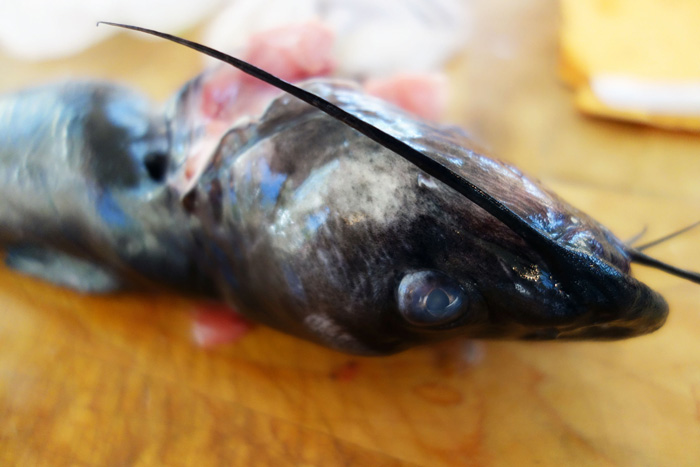

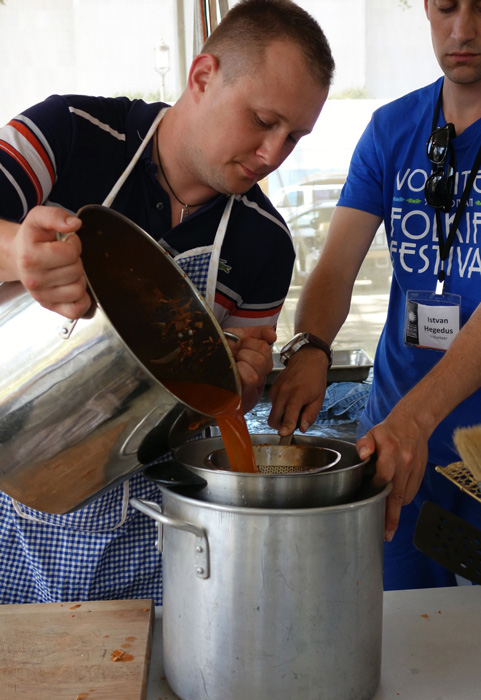
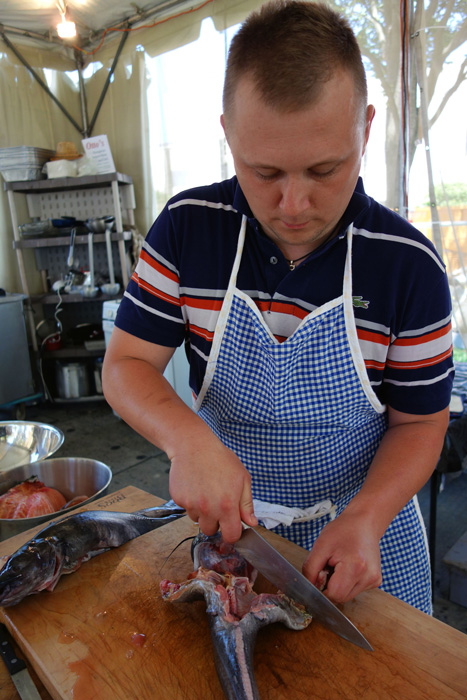
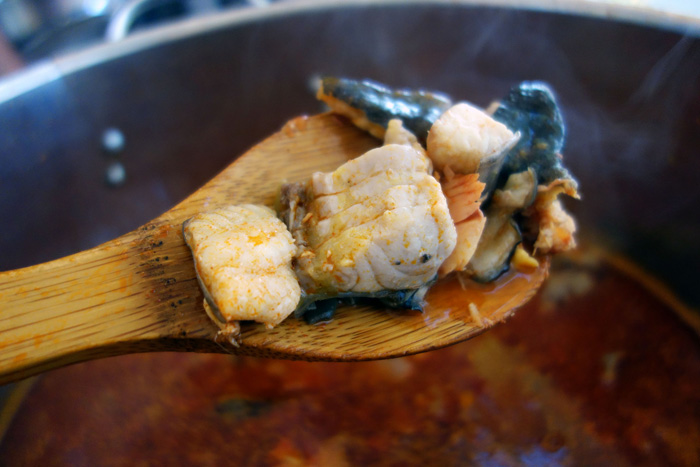
Lili Kocsis is the Participant Assistant for the 2013 Hungarian Heritage Festival program. She graduated from Harvard University in 2011 with a B.A. in linguistics. She dedicates her spare time to purposeful travel, food photography, and writing about regional cuisine.

